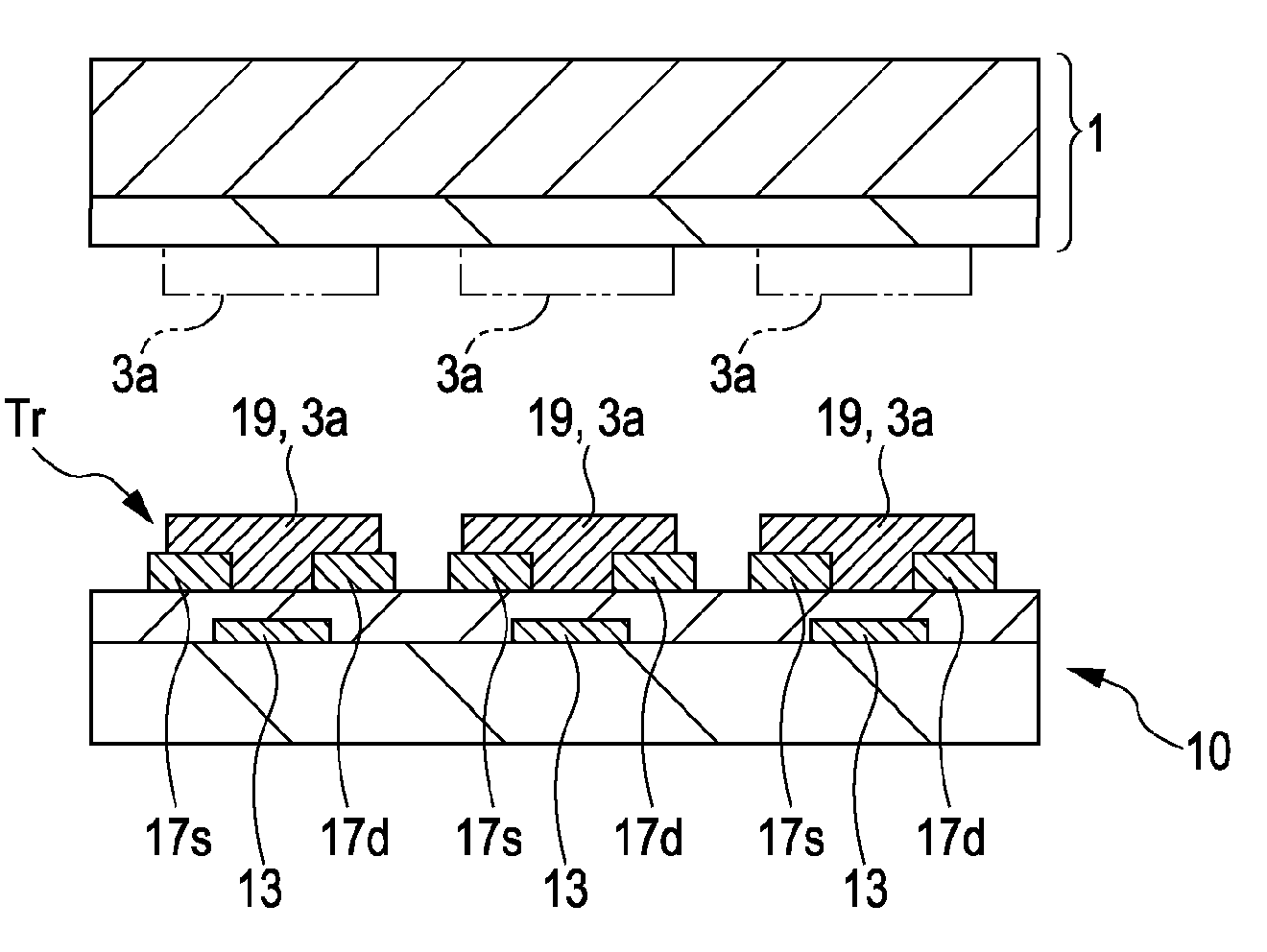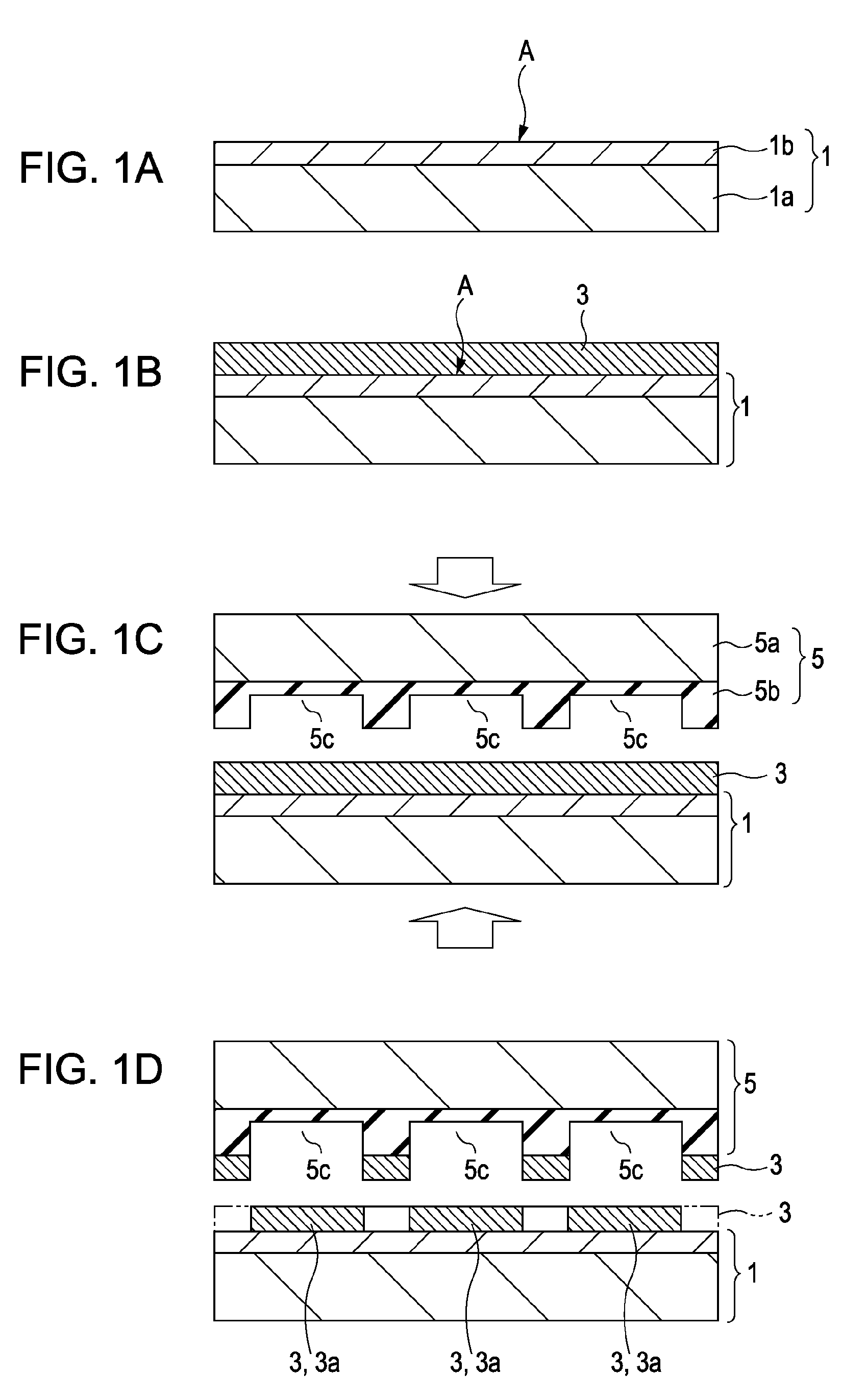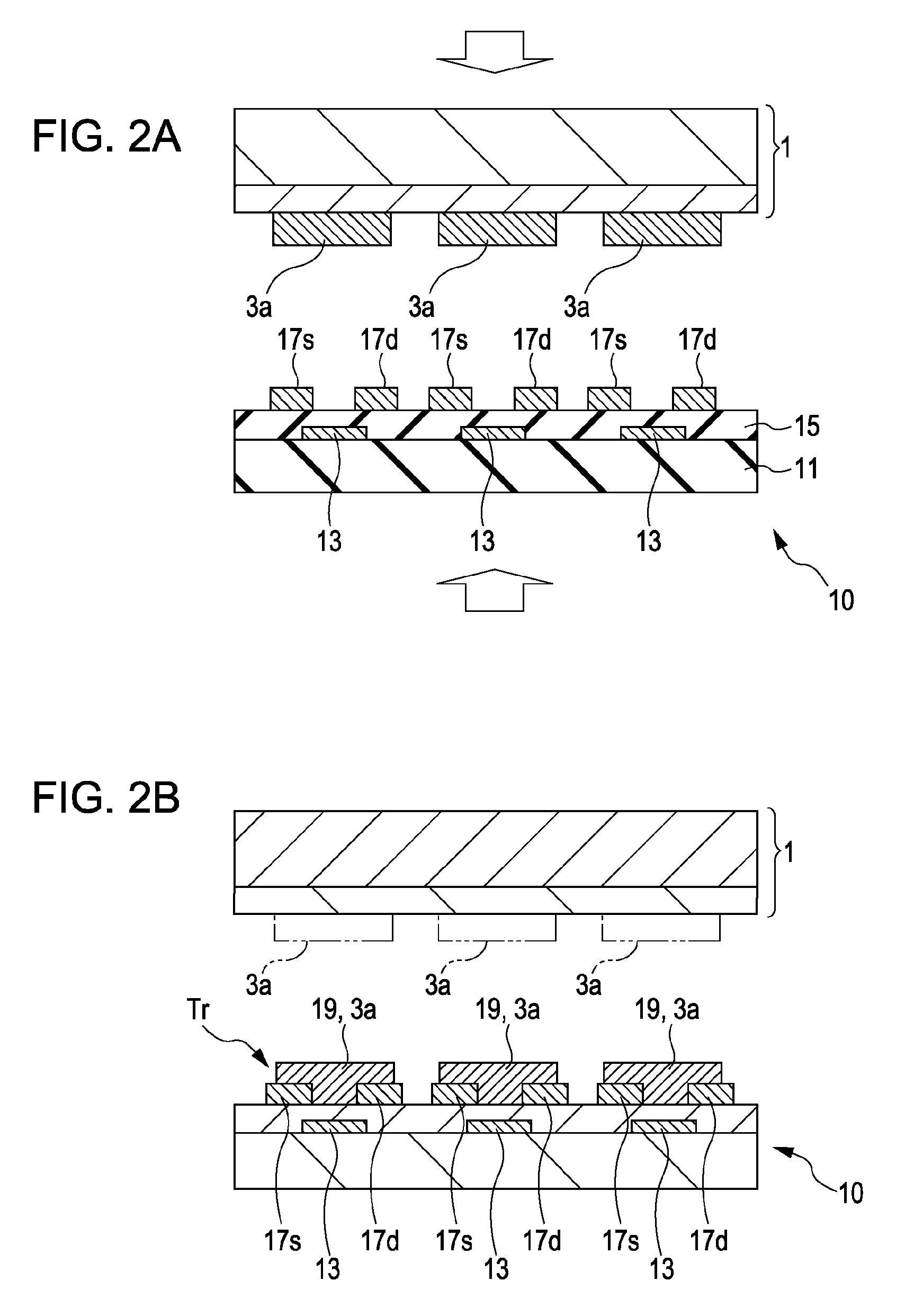Method for forming organic semiconductor thin film and method of manufacturing thin-film semiconductor device
a technology of organic semiconductor and thin film, which is applied in the direction of semiconductor devices, basic electric elements, electrical equipment, etc., can solve the problems of limited material selection freedom in printing formation of this type of organic semiconductor thin film, and achieve the effect of increasing the degree of selection freedom and increasing the selection of organic semiconductor materials
- Summary
- Abstract
- Description
- Claims
- Application Information
AI Technical Summary
Benefits of technology
Problems solved by technology
Method used
Image
Examples
first embodiment
[0019]FIGS. 1A to 2B are sectional process views showing show a method of manufacture according to a first embodiment of the present invention. A method of forming an organic semiconductor thin film according to the first embodiment and a method of manufacturing a thin-film semiconductor device using the organic semiconductor thin film will be described hereafter making reference to FIGS. 1A to 2B. The first embodiment will describe the manufacture of a thin-film semiconductor device provided with a plurality of bottom-gate bottom-contact organic thin-film transistors.
[0020]Firstly a printing plate 1 is prepared as shown in FIG. 1A. The printing plate 1 may use a blanket layer 1b formed from liquid-resistant PDMA to cover a surface of a supporting substrate 1a with the surface side of the blanket layer 1b forming a liquid-resistant surface A.
[0021]Then as shown in FIG. 1B, a mixed ink layer 3 according to the embodiment of the present invention is coated and dried on the liquid-resi...
second embodiment
[0038]FIGS. 4A to 5B are sectional process views showing a method of manufacture according to a second embodiment of the present invention. A method of forming an organic semiconductor thin film according to the second embodiment and a method of manufacturing a thin-film semiconductor device using the organic semiconductor thin film will be described hereafter using FIGS. 4A to 5B. The second embodiment will describe the manufacture of a thin-film semiconductor device provided with a plurality of bottom-gate bottom-contact organic thin-film transistors in the same manner as the first embodiment.
[0039]Firstly a printing plate 1 is prepared as shown in FIG. 4A in the same manner as the first embodiment. The printing plate 1 includes a blanket layer 1b formed from liquid-resistant PDMA to cover a surface of a supporting substrate 1a with the surface of the blanket layer 1b forming a liquid-resistant surface A.
[0040]Then as shown in FIG. 4B, a mixed ink layer 3′ constituted by a plurali...
third embodiment
[0057]A third embodiment of the present invention will be described hereafter. A method of manufacturing a backplane of a liquid crystal display device will be described as an example of a thin-film semiconductor device and thereafter the structure of a liquid crystal display device using the backplane will be described.
[0058]Firstly the structure of a backplane 20 will be described using the circuit diagram in FIG. 6A and the pixel section plan view in FIG. 6B. A display region 21A and a region 21B peripheral to the display region are set in the supporting substrate 21 of the backplane 20. A plurality of scanning lines 23 and a plurality of signal lines 24 are disposed in a matrix format on the display region 21A and a pixel a is provided at each intersecting section to form a pixel array section. Furthermore a plurality of common wirings 25 are disposed in parallel to the scanning lines 23 on the display region 21A. A scanning line drive circuit 26 scanning and driving the scannin...
PUM
| Property | Measurement | Unit |
|---|---|---|
| thickness | aaaaa | aaaaa |
| thickness | aaaaa | aaaaa |
| surface energy | aaaaa | aaaaa |
Abstract
Description
Claims
Application Information
 Login to View More
Login to View More - R&D
- Intellectual Property
- Life Sciences
- Materials
- Tech Scout
- Unparalleled Data Quality
- Higher Quality Content
- 60% Fewer Hallucinations
Browse by: Latest US Patents, China's latest patents, Technical Efficacy Thesaurus, Application Domain, Technology Topic, Popular Technical Reports.
© 2025 PatSnap. All rights reserved.Legal|Privacy policy|Modern Slavery Act Transparency Statement|Sitemap|About US| Contact US: help@patsnap.com



